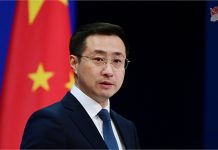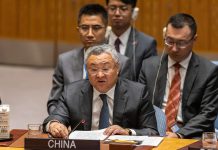
China’s entry into the WTO in 2001 was an event of the utmost importance given its economic weight and population. Many Western analysts saw this as a harbinger of China’s adherence to the Western economic model. Once again, these analysts were looking at China with the wrong lens.

Meeting challenges
The most important thing was that multilateralism was gaining ground, regardless of each country’s political and economic regimes, in line with the spirit of the UN, which does not discriminate against states because of their government regimes and economic models. But the
September 11 terrorist attacks in New York City in 2001 and the 2008 financial crisis reversed the positive expectations fueled in the 1990s that seem increasingly distant now. Multilateralism has begun a retraction stage aggravated by the U.S.’ difficulty in dealing with China’s economic rise. This scenario has led the U.S. to take protectionist and unilateralist measures that raise questions about its commitment to the economic order it once ardently defended.
And this scenario continues to worsen. The U.S. began to question the rules of the international system that they had defended before. Also, since the war against Iraq in 2001, the U.S. has showed signs of privileging NATO over the UN when the matter is of supreme national interest and meets its demands for expansion of power.
This expansion and how it is being carried out worry many countries. It suffices to note that the vast majority of, if not all, countries in South and Central America, Africa, the Middle East and Asia have refused to impose sanctions against Russia in the current conflict with Ukraine, contrary to the expectations of the U.S. and other NATO countries.
We are not saying that those countries are against the U.S. and NATO, but they do not want a unipolar world. They don’t agree to submit multilateralism to the interests of only a few powerful Western countries. So, it is time to urgently rediscuss the future of the UN, its reform, and support initiatives that strengthen multilateralism.
The Belt and Road Initiative proposed by China is the first major international initiative of the 21st century, with positive reverberation for the Eurasian region and even for African and Latin American countries. In other words, it is an initiative that promotes and expands multilateralism and, therefore, should be very welcome.
The initiative is an economic integration project different from those that prevailed in the 20th century with two great models as its reference: the European model, based on the constitution of an international organization—in this case, the EU—with a highly complex legal-institutional apparatus and with a transfer of part of the sovereignty of its member states to some bodies of this organization; and the American model, based on a low-profile economic integration process, oriented toward the constitution of free trade zones that only imply the reduction of tariff and non-tariff barriers for goods, without worrying about the free circulation of people and with very few investments in infrastructure to improve the international trade between the countries involved in the economic integration project.
The Belt and Road Initiative, on the other hand, is based on investment aimed at infrastructure but accompanied by the promotion of commerce, people-to-people exchange, and financial integration—based on dialogue with each of the participating countries.
Today, the biggest challenge for China is to ensure these countries consider themselves true participants in this initiative. Countries like Brazil, that have not formally declared their participation, need to understand better the initiative and how it can boost international trade and multilateralism, benefiting Brazil and the entire South American region.
The Belt and Road Initiative evokes the possibility of a new age of enlightenment for the world. It is no exaggeration to think about what the ancient Silk Road meant for the West. At a time when the West is deteriorating, with xenophobic, anti-science and Nazi-fascist discourses, a new Silk Road can symbolize the beginning of a luminous reaction to all this darkness that is gaining ground in several Western countries.
Partnering up
Since the Belt and Road Initiative was put forward, the ever-developing relations between China and Latin America have generated major changes. The region’s main change was the type of diplomatic relations.
Let’s be clear: China is more open to respectful and plural dialogue with Latin American nations than the U.S. In addition, China has contributed to the development of South American countries by investing in infrastructure projects. In this relationship, China does not look down on its partner countries nor impose conditions that can be interpreted as interventions in the domestic affairs of these countries.
Furthermore, the relationship between China and South American countries increases our repertoire of diplomatic concepts and practices, expanding our capacity to act in the world. South American countries are challenged to understand the Chinese method and wisdom better, and this challenge makes them reflect on their practices and knowledge beyond those learned in the developed West. I hope China and the Global South countries can insist on creating a new diplomatic grammar and dictionary to solve new and old problems with new tools and ideas.
The era of innocence of beneficial U.S. hegemony is over. The U.S. is revealing more explicitly to anyone who wants to see the more aggressive face of its foreign policy. Any country that occupies the position of the greatest power in the world will defend its position against the challengers. But what we hope is that this fight for the podium does not change into a systematic process of using force and fake news. Therefore, the reaction of U.S. politicians to the increasing presence of Chinese companies in Brazil and the good bilateral trade between our two countries doesn’t surprise me.
However, the increase in bilateral relations between Brazil and China in no way means an ideological rapprochement or anything similar between the two countries. It has just been a relationship based on interests in trade and investment opportunities. Nothing more. There is no country more pragmatic than China. China trades and invests with whomever it wants and is willing to establish business relationships based on mutual gains.
And there is indeed much room for cooperation. The Brazil-China relationship is far from having reached its potential. After all, there is still a lot of ignorance about China among Brazilians. And ignorance prevents us from seeing opportunities to develop bilateral relations and makes us more likely to believe in fake news about China. For this reason, when the U.S. defames China-Brazil relations, this defamation ends up creating repercussions in part of the Brazilian society.
It is essential to emphasize that the U.S. count on the part of the Brazilian elite that is committed to American interests in Brazil. Paradoxically, this same elite is doing multi-million dollar deals with China and, at the same time, is funding bloggers and media groups that systematically attack those who seek to develop Brazil’s relations with China outside the arc of U.S. influence.
We cannot ignore that Brazil is in the U.S. geographic area of influence, and Brazil needs to establish a good relationship with it. Even better if this relationship is horizontal and not based on a submissive attitude. The less intense Brazil’s relationship with China, the more dependent we will be on the U.S. This is not our national interest, and what serves our national interest is to maintain a balanced relationship between these two great economic powers.
Debt or development?
The U.S. often claims the Belt and Road Initiative is a “debt trap” so that it can prevent normal relations between China and other countries in the region.
Yet the initiative will only be a “debt trap” for those countries that do not have solid institutions and don’t have good governments and competent bureaucracy. This is not to say China will take advantage of these vulnerable countries, but we cannot demand China be responsible for both parties and occupy both sides of a negotiating table.
The risk of a “debt trap” is zero if the country China deals with is prepared enough to undertake a good negotiation that serves its interests. I don’t see China as resistant to this; quite the opposite. Better for China if the cooperation project generates mutual gains for both sides because China bets on long-term rather than short-term relationships.
Deals in which only China wins, and the other country loses, are, in fact, undesirable for the former. The Chinese Government knows that this type of deal will not build a long-term relationship with the partners and may even deteriorate the Chinese image, with impacts on other businesses the country has with that foreign country. What bothers the U.S. most is that Chinese diplomacy is more efficient and friendly, creating lasting relations with other countries.
For Western countries, only everything that presents itself as a mirror is beautiful and acceptable. They were never concerned with understanding others, but with making others copy their model. The imitation policy was not only encouraged but imposed by the West on other countries that had to adopt Western rules and governance models. Contrary to what the West expected, China resists being the image and likeness of the West. Could you imagine what the world would be if China acted the same way the West usually does toward developing countries?
China learned a lesson in the late 19th century from one of the most important officials of the Qing Dynasty (1644-1911), Zhang Zhidong, who said the following: “Chinese teachings as a basis, Western studies for use.” China applies this lesson to this day. Meanwhile, the Western knowledge of Chinese reality is still insufficient. This puts Western countries at a disadvantage in their relationship with China. Understanding China and communicating with China will forge the safest path to a more civilized and, therefore, more peaceful world.






